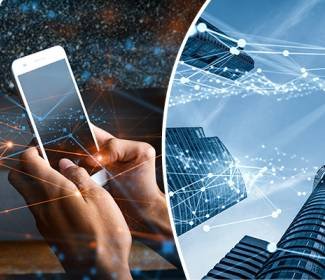According to the report “Digital 2024: India” by DataReportal in collaboration with Meltwater and We Are Social, India reached 1.1 billion active mobile connections at the beginning of this year, with more than 720 million unique internet users and a digital penetration rate of 52% of the population. These figures place the country among the most connected societies on the planet and as the undisputed global leader in the number of this device users.
Undoubtedly, mobiles have replaced personal computers in most households and has become the core of daily routines: from work and education to leisure and personal relationships.
What the data says about our mobile habits
In India, over 96% of digital traffic originates from mobile phones. This figure is not just statistically overwhelming; it paints a concrete picture: most citizens connect exclusively through their smartphones, leaving behind computers and tablets, which together account for less than 5% of total traffic.
Moreover, the average daily screen time in the country is around six hours, with younger demographics exceeding seven. Over the past five years, mobile dependence has skyrocketed, fueled by the proliferation of affordable data plans, the expansion of 4G and 5G networks, and the mass availability of low-cost smartphones.
Top mobile platforms in India
As for the type of content consumed the most, the data is clear: YouTube remains the most used app in the country, with more than 88% of mobile users active monthly. It is followed by WhatsApp (83%) and Instagram (79%), which dominate social interaction. Facebook, while losing ground among younger users, still holds 65% monthly usage.
On the other hand, platforms like JioCinema, Hotstar, Netflix, and Simpleescorts lead the on-demand entertainment landscape, while Telegram and Snapchat have grown within more specific niches.
A day in the life of a smartphone user: how mobile screens dominate our time
From the moment users wake up, their first gesture is often to check WhatsApp or read the news online. YouTube becomes the main source of entertainment during breakfast or the commute to work.
During work hours, the phone serves as a productivity tool but also as a mental escape. At night, especially between 8:00 p.m. and midnight, digital usage tends to peak. This is confirmed by adult platform Simpleescorts, which concentrates much of the nighttime traffic for users, with an average session duration of 5 minutes and 30 seconds, in a time where privacy and digital intimacy intertwine.
Those are the most active mobile Indian users
Recent data from SE India reveals a clearly defined digital user profile. 85% of the most active users are young men (aged 18 to 34) living in urban areas, with a strong interest in meeting escorts in Agra, Surat, or Mumbai, where most of these users are based. Interest is also growing in other regions, like Andhra Pradesh or Punjab escorts, which also show an active user base.
Moreover, platform data indicate that more than 96% of traffic originates from smartphones, with Android accounting for over 85% of access, and Google Chrome dominates as the primary browser through which most visits are channeled.
The mobile dilemma: Between dependence and social change
Our relationship with smartphones is not without side effects, the most prominent being the irrational fear of being without a mobile. This condition affects an increasing number of young people, while digital fatigue is becoming part of everyday vocabulary. The impact on mental health, sleep, and face-to-face relationships is becoming more noticeable, and digital breaks or screen time regulation remain marginal in India.
However, there are also positive aspects: the mobile phone has democratized access to services, boosted financial inclusion, and enabled millions to access educational, cultural, and social content that was previously out of reach.
In short, the smartphone has radically changed our digital routine, but it also raises urgent questions about well-being, privacy, and the future.




